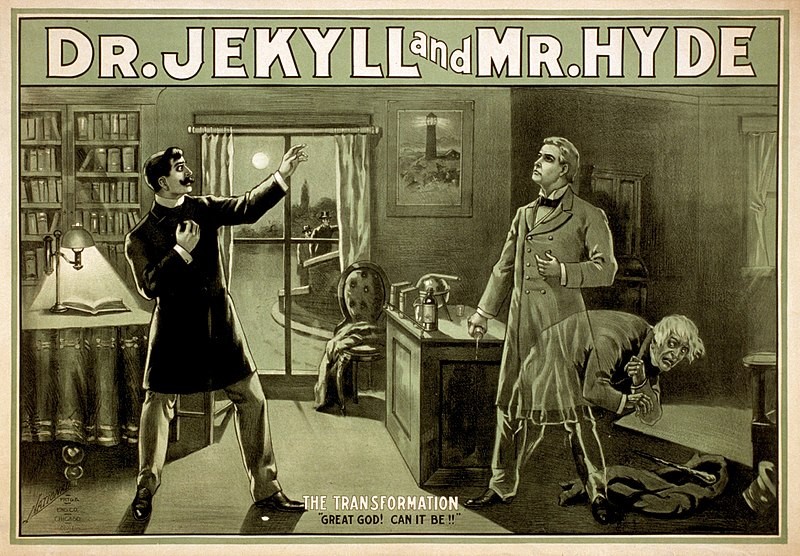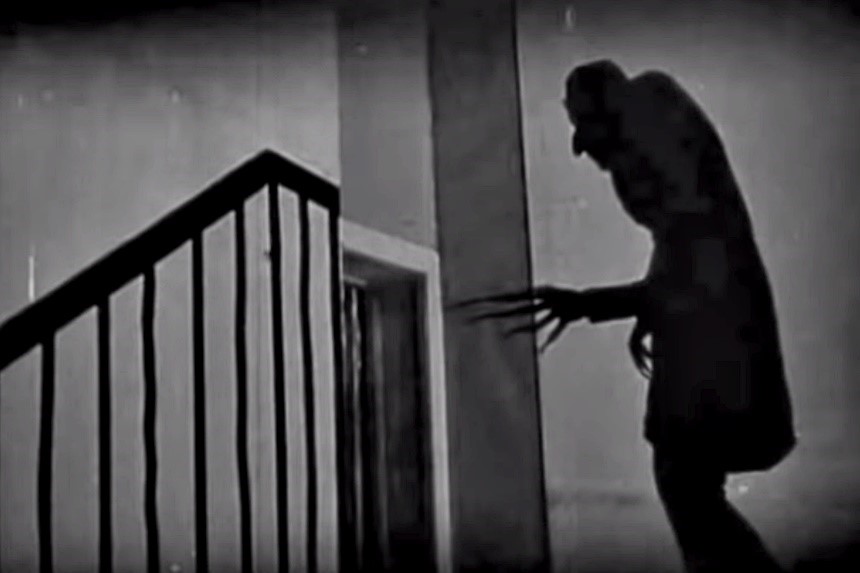ifrFrom Mr. Hyde to Pennywise, from vampires to demons, things that go bump in the night have always been part of our culture of entertainment. How has the horror movie genre evolved since its debut 111 years ago? Here are the films and moments that dramatically changed horror movies as we know them today.
The Earliest Horror Movies
On May 21, 1908, the film many consider to be the first horror movie, Dr. Jekyll and Mr. Hyde, premiered in Chicago. It was a silent black-and-white film that received positive reviews from critics. Unfortunately, there are no known existing copies of the film that birthed horror.

Twelve years later, The Cabinet of Dr. Caligari debuted. Many consider this movie about a hypnotist who uses a somnambulist to commit murders to be the quintessential German Expressionist film. Its dark, striking style greatly influenced the visuals of later horror movies.
The complete Nosferatu from 1922.
Fourteen years after Dr. Jekyll and Mr. Hyde, Nosferatu was released. It was the first movie based on the novel Dracula by Bram Stoker, although it was an unauthorized re-creation. Also a silent black-and-white film, Nosferatu is considered to be one of the best films in history, landing at No. 21 on Empire magazine’s top 100 movies of world cinema in 2010. It heavily influenced the style of later horror movies such as Salem’s Lot, one of the many horror movies based on novels by Stephen King.
Monsters Take Over
One of the most famous film adaptions of Stoker’s novel came in 1931, with Universal Studios’ Dracula. Dracula was the third major installment in Universal’s Classic Monsters series, along with The Hunchback of Notre Dame and The Phantom of the Opera. These films were some of the first horror movies with sound. The Classic Monsters series also included Frankenstein, The Mummy, The Invisible Man, The Wolf Man, and Creature from the Black Lagoon.
A scene from Dracula (1931)(Uploaded to YouTube by Movieclips)
These films made monster movies immensely popular, a popularity that persists to this day. In addition to influencing later movies like The Monster Squad (1987), where a group of kids fight the Universal monsters, the Classic Monsters franchise was also the first shared cinematic universe. Films like Frankenstein Meets the Wolf Man, Son of Dracula, and The House of Frankenstein showed some of the most famous monsters meeting each other and occasionally battling. This shared movie universe paved the way for later franchises, most notably the Marvel Cinematic Universe.
In the middle of this horror storm, Cat People, a story about a woman who transforms into a panther, premiered in 1942. Cat People is significant to the story of horror because it featured not one, but two of the greatest scares of the 1940s: the first was a chase sequence that cleverly alternated light and shadow, and the second was a slow burn of a scene that featured a woman being terrorized in the middle of a darkened swimming pool. This film led horror down the path of being truly scary.
Godzilla came on the scene in 1954. The King of the Monsters has been featured in 32 films and has become one of the most beloved characters in pop culture, not just horror. Godzilla carried the torch for the giant monster subset of horror that had been ignited by King Kong in 1933.
Another game-changer for horror movies made its appearance in 1957 with the Hammer Studios production of The Curse of Frankenstein. It was the first horror movie in color, and the first truly “gory” horror film, featuring vivid images of blood and guts that had never before been seen onscreen.
Films Get Scarier
Three years after The Curse of Frankenstein, Psycho cut into the big screen. One of the first horror films based on a true story, it is also credited with birthing the slasher genre of horror, a genre that would later be modernized and improved upon by films such as Halloween.
By now, you might be wondering why zombies haven’t been discussed yet. That’s because the start of zombies as we know them comes in George A. Romero’s 1968 film Night of the Living Dead. It was the first film to depict zombies as reanimated, flesh-eating monsters, the kind you see in horror television like The Walking Dead.
Also released in 1968 was Rosemary’s Baby, based on the novel by Ira Levin. Rosemary’s Baby, which tells the story of a woman who believes a cult wants to take her baby for use in its rituals, is beloved by many due to its mastery of suspense and its shocking ending. Mia Farrow, who played Rosemary, was nominated for a Golden Globe for her performance. This was the one of the first times an actress received a Golden Globe nomination for her work in a horror film.
Five years later, The Exorcist (1973), arguably one of the scariest and most shocking horror movies ever, burned itself onto the list of horror greats. The Exorcist was striking because of how truly terrifying it was, a fact that is exemplified in scenes such as the iconic shot of Regan’s head spinning. Many people still do not know how director William Friedkin managed to achieve some of the stunning visuals that he did. The Exorcist changed the subject matter of horror films, making them darker and a little scarring.
Trailer for The Exorcist (Uploaded to YouTube by YouTube Movies)
The 1974 film The Texas Chain Saw Massacre upped the ante again, exploring the concept of using a horror movie as a vehicle for social commentary (it discussed the Vietnam war and Watergate specifically) while also increasing the gore quotient. It also introduced a modern “horror hero” in Leatherface, a character that would appear in numerous sequels and reboots.
Other important modern horror movies with lasting impact include Jaws (it made the beach scary); Alien, a brilliant cosmic horror film with an assertive and commanding female hero; and The Silence of the Lambs, which won five Oscars. Significant changes to well known monster types came in 28 Days Later (fast zombies) and Let the Right One In (which reframed the vampire story as a parable about bullying and abuse).
Getting Real
One of the most significant changes to modern horror started in 2013, with The Conjuring. Based upon real-life paranormal investigators Ed and Lorraine Warren, The Conjuring follows the couple as they investigate strange happenings at a Rhode Island farmhouse. It started the first successful interconnected universe of horror movies since the Universal Classic Monsters 70 years prior. The Conjuring universe includes the three Annabelle films, The Nun and its sequel, The Curse of La Llorona, and the forthcoming The Crooked Man.
The trailer for It: Chapter 2 (Uploaded to YouTube by Warner Bros.)
Horror continues to evolve. This year, It: Chapter Two, the third movie based on the book It by Stephen King, and the second film in the recently rebooted series, is setting a record for the most fake blood ever used in a single movie scene, but it is also notable for casting big stars like Jessica Chastain and Bill Hader in starring roles.
New changes and improvements to horror films are coming faster than the deaths in them. But there’s no way to predict what terrifying evolution will shape horror next, so we should just sit back and enjoy the ride. And maybe bring an extra pair of pants.
Featured image: A still from early horror movie Nosferatu.
Become a Saturday Evening Post member and enjoy unlimited access. Subscribe now



